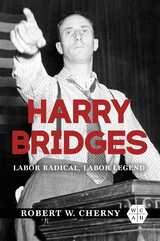4 books about Smith, John
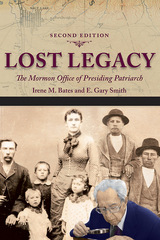
Lost Legacy
The Mormon Office of Presiding Patriarch
Irene M. Bates
University of Illinois Press, 2018
Joseph Smith's father, Joseph Smith Sr., first occupied the hereditary office of Presiding Patriarch of the Church of Jesus Christ of Latter-day Saints. Thereafter, it became a focal point for struggle between those appointed and those born to leadership positions. This new edition of Lost Legacy updates the award-winning history of the office. Irene M. Bates and E. Gary Smith chronicle the ongoing tensions around the existence of a Presiding Patriarch as a source of conflict between the Smith family and the rest of the leadership. Their narrative continues through the dawning realization that familial authority was incompatible with the LDS's structured leadership and the decision to abolish the office of Patriarch in 1979. This second edition, revised and supplemented by author E. Gary Smith, includes a new chapter on Eldred G. Smith, the General Authority Emeritus who was the final Presiding Patriarch. It also corrects the text and provides a new preface by E. Gary Smith.
[more]
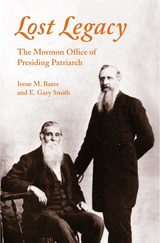
Lost Legacy
THE MORMON OFFICE OF PRESIDING PATRIARCH
Irene Bates and E. Gary Smith
University of Illinois Press, 1996
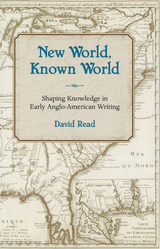
New World, Known World
Shaping Knowledge in Early Anglo-American Writing
David Read
University of Missouri Press, 2005
New World, Known World examines the works of four writers closely associated with the early period of English colonization, from 1624 to 1649: John Smith’s Generall Historie of Virginia, William Bradford’s Of Plymouth Plantation, Thomas Morton’s New English Canaan, and Roger Williams’s A Key into the Language of America (in conjunction with another of Williams’s major works, The Bloudy Tenent of Persecution). David Read addresses these texts as examples of what he refers to as “individual knowledge projects”— the writers’ attempts to shape raw information and experience into patterns and narratives that can be compared with and assessed against others from a given society’s fund of accepted knowledge.
Read argues that the body of Western knowledge in the period immediately before the development of well-defined scientific disciplines is primarily the work of individuals functioning in relative isolation, rather than institutions working in concert. The European colonization of other regions in the same period exposes in a way few historical situations do both the complexity and the uncertainty involved in the task of producing knowledge.
Read treats each work as the project of a specific mind, reflecting a high degree of intentionality and design, and not simply as a collection of documentary evidence to be culled in the service of a large-scale argument. He shows that each author adds a distinct voice to the experience of North American colonization and that each articulates it in ways that are open to analysis in terms of form, style, convention, rhetorical strategies, and applications of metaphor and allegory.
By applying the tools of literary interpretation to colonial texts, Read reaches a fuller understanding of the immediate consequences of English colonization in North America on the culture’s base of knowledge. Students and scholars of early modern colonialism and transatlantic studies, as well as those with interests in seventeenth-century American and English literature, should find this book of particular value.
[more]
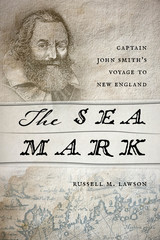
The Sea Mark
Captain John Smith’s Voyage to New England
Russell M. Lawson
University Press of New England, 2015
By age thirty-four Captain John Smith was already a well-known adventurer and explorer. He had fought as a mercenary in the religious wars of Europe and had won renown for fighting the Turks. He was most famous as the leader of the Virginia Colony at Jamestown, where he had wrangled with the powerful Powhatan and secured the help of Pocahontas. By 1614 he was seeking new adventures. He found them on the 7,000 miles of jagged coastline of what was variously called Norumbega, North Virginia, or Cannada, but which Smith named New England. This land had been previously explored by the English, but while they had made observations and maps and interacted with the native inhabitants, Smith found that “the Coast is . . . even as a Coast unknowne and undiscovered.” The maps of the region, such as they were, were inaccurate. On a long, painstaking excursion along the coast in a shallop, accompanied by sailors and the Indian guide Squanto, Smith took careful compass readings and made ocean soundings. His Description of New England, published in 1616, which included a detailed map, became the standard for many years, the one used by such subsequent voyagers as the Pilgrims when they came to Plymouth in 1620. The Sea Mark is the first narrative history of Smith’s voyage of exploration, and it recounts Smith’s last years when, desperate to return to New England to start a commercial fishery, he languished in Britain, unable to persuade his backers to exploit the bounty he had seen there.
[more]
READERS
Browse our collection.
PUBLISHERS
See BiblioVault's publisher services.
STUDENT SERVICES
Files for college accessibility offices.
UChicago Accessibility Resources
home | accessibility | search | about | contact us
BiblioVault ® 2001 - 2024
The University of Chicago Press



